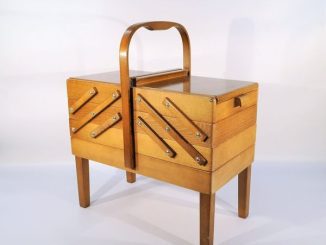Take a moment to examine the picture of this wooden contraption. Does it bring back memories? Perhaps you’ve seen something like this tucked away in an old attic, at an antique store, or even in a museum. This fascinating device is a Vintage Antique Anchor Brand Bicycle Wooden Hand Crank Clothes Wringer, a once-essential tool in every household. It’s a relic from an era when doing laundry was far more labor-intensive than it is today.
While it may look like a strange and outdated piece of machinery now, this hand-crank clothes wringer was a technological marvel in its time, helping people save time and effort on laundry day. Let’s delve into the history, significance, and the unique stories surrounding this vintage tool.
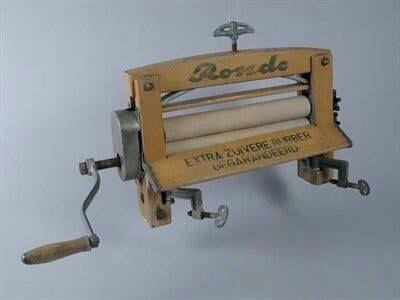
What Is a Hand Crank Clothes Wringer?
A hand crank clothes wringer, like the one in the image, was designed to remove excess water from freshly washed clothes. Before the advent of modern washing machines and dryers, laundry involved scrubbing clothes by hand in a tub or washboard. After washing, the challenge was squeezing out all the water before hanging the clothes to dry. That’s where the wringer came in.
The Anchor Brand Bicycle Clothes Wringer featured two sturdy rollers, typically made of wood or rubber, mounted in a wooden or metal frame. The user would feed wet clothing between the rollers while turning the hand crank, pressing out water as the clothing passed through. The simple mechanism worked efficiently, and while it required some physical effort, it was far easier than wringing clothes by hand.
The Story of the Anchor Brand Bicycle Clothes Wringer
The Anchor Brand Bicycle Clothes Wringer was manufactured during the late 19th and early 20th centuries. Its distinct name, “Bicycle,” comes from the gear-like design of its cranks and rollers, reminiscent of the mechanics of a bicycle. Produced by companies like Lovell Manufacturing Company in Erie, Pennsylvania, the Anchor Brand wringer became one of the most popular and trusted names in household laundry tools.
These wringers were built to last. The combination of durable wood, rubber rollers, and cast iron parts meant they could handle years of heavy use. Their sturdy construction and timeless design have made them highly collectible today.
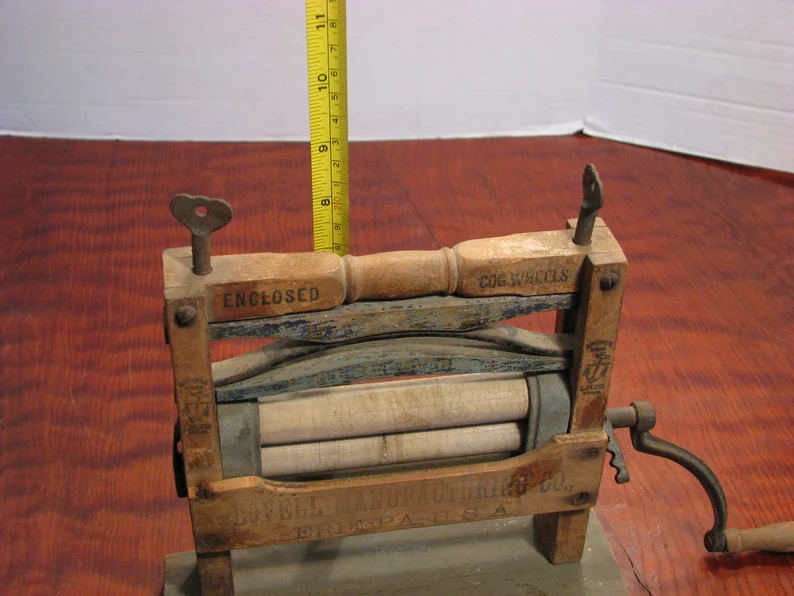
A Glimpse Into Laundry Life in the Past
Imagine a time before electric washers and dryers, when laundry day was an all-day event. For most families in the late 19th and early 20th centuries, washing clothes was an arduous process involving multiple steps:
- Soaking and Washing: Clothes were soaked in tubs filled with soapy water. Scrubbing was done by hand or with a washboard, requiring significant effort.
- Rinsing: Clothes were rinsed in fresh water, often several times, to remove soap.
- Wringing: This is where the hand crank clothes wringer came in. After rinsing, the clothes were fed through the rollers to squeeze out as much water as possible.
- Drying: Clothes were then hung on a line outdoors or near a fire to dry completely.
The wringer made the process faster and less physically demanding, especially for women who typically shouldered the responsibility of laundry. It became an indispensable tool in homes, saving precious time and energy.
Why Was It Called the “Bicycle” Wringer?
The “Bicycle” in the name refers to the mechanical inspiration behind its design. The wringer’s cranks and rollers operated similarly to the gear and chain mechanisms of a bicycle. This clever engineering made it easier to turn the crank and feed clothes through the rollers smoothly, reducing the physical strain on the user.
The bicycle-inspired design also gave the wringer a sleek, modern aesthetic for its time, appealing to families who wanted a practical yet visually pleasing tool in their homes.
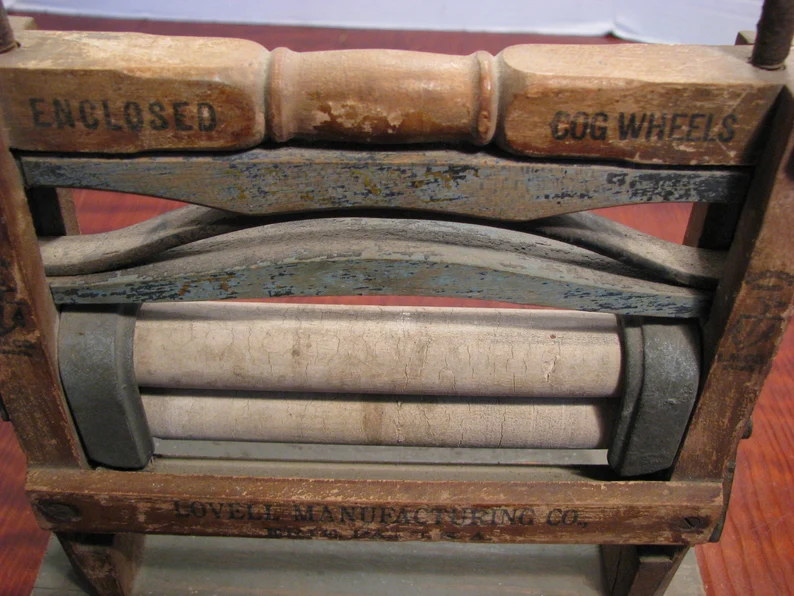
A Symbol of Innovation and Domestic Life
The Anchor Brand Bicycle Clothes Wringer represents more than just a household tool; it symbolizes the ingenuity and resourcefulness of its era. During the late 1800s, innovations like this wringer were helping to transform domestic chores, making life a little easier for households across America.
The wringer’s popularity reflected the societal shift toward efficiency and practicality. It was affordable, durable, and easy to use, making it accessible to families of all economic backgrounds. As a result, it became a staple in homes, helping women—who often bore the brunt of housework—gain more control over their time.
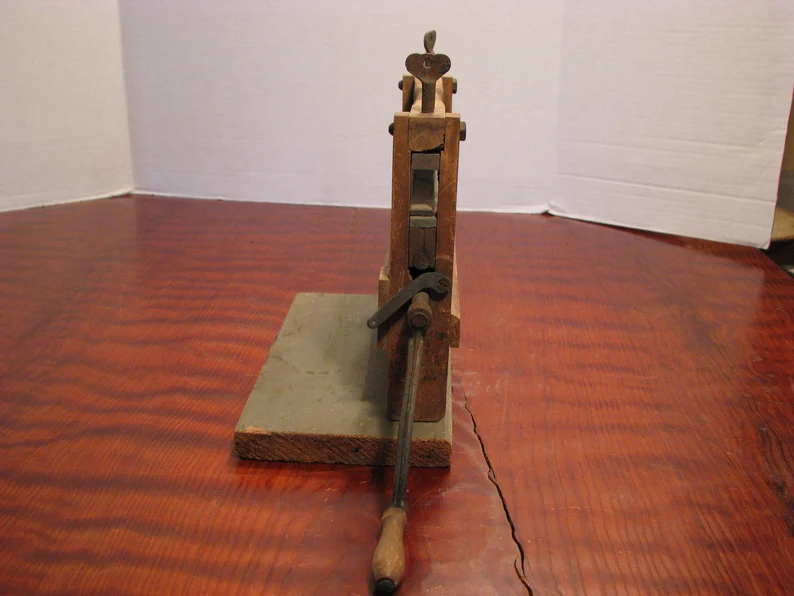
From Everyday Tool to Vintage Treasure
As electric washing machines with built-in spin cycles became widespread in the mid-20th century, the hand crank clothes wringer gradually faded into obsolescence. By the 1950s and 60s, these devices were no longer a common sight in households.
Today, however, they hold a special place in the hearts of collectors and history enthusiasts. The Anchor Brand Bicycle Clothes Wringer is particularly prized for its unique design and nostalgic value. Many people display these wringers in their homes as decorative pieces or use them in creative ways, such as repurposing them into quirky furniture or garden fixtures.
Why This Vintage Wringer Still Matters
The hand crank clothes wringer may seem like an outdated relic, but it has lessons to teach us about innovation, resilience, and sustainability:
- Built to Last: Unlike many modern appliances, these wringers were constructed with durability in mind. Their longevity is a testament to the quality craftsmanship of the past.
- Sustainability: In an age of disposable gadgets, tools like this wringer remind us of the importance of reusability and repairability.
- Cultural Heritage: This device is a tangible connection to our past, offering insights into how previous generations managed their daily lives.
Preserving a Piece of History
If you happen to own a Vintage Anchor Brand Bicycle Clothes Wringer, you have a piece of history in your hands. Whether you keep it as a functional tool or display it as an antique, caring for it is essential to preserving its legacy:
- Clean the wood and metal parts with a soft cloth and mild cleaner to remove dust and grime.
- Keep it in a dry environment to prevent rust or wood damage.
- If the rollers are intact, consider using them for light wringing tasks, such as small cloth items or crafting projects.
Conclusion: A Timeless Icon of Domestic Ingenuity
The Anchor Brand Bicycle Clothes Wringer is more than just a tool; it’s a story of innovation, hard work, and the pursuit of making life a little easier. For those who grew up seeing or using these devices, they evoke a sense of nostalgia and appreciation for simpler times. For younger generations, they offer a fascinating glimpse into the domestic history of the late 19th and early 20th centuries.
As we look back at this ingenious device, we’re reminded of the resilience and resourcefulness of the people who relied on it. The wringer stands as a testament to an era when tools were built not only to serve a purpose but to endure the test of time. Whether displayed as a vintage treasure or remembered fondly in family stories, the Anchor Brand Bicycle Clothes Wringer continues to inspire admiration and curiosity for generations to come.
